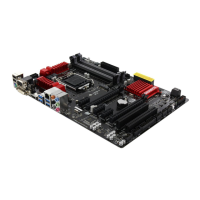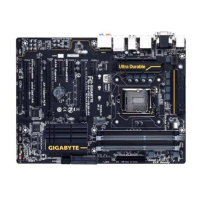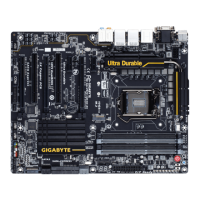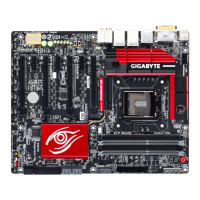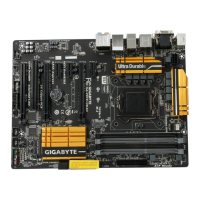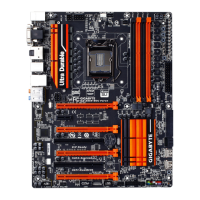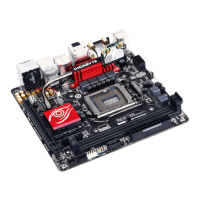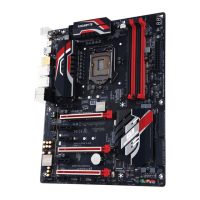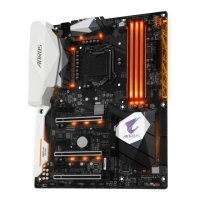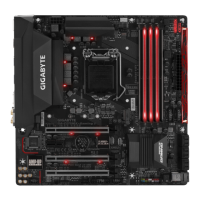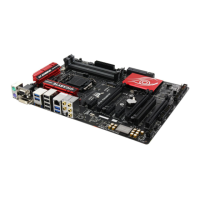
Do you have a question about the Gigabyte GA-Z97X-Gaming 5 and is the answer not in the manual?
| Non-ECC | Yes |
|---|---|
| Memory channels | Dual-channel |
| Memory slots type | DIMM |
| Number of memory slots | 4 |
| Supported memory types | DDR3-SDRAM |
| Maximum internal memory | 32 GB |
| Supported memory clock speeds | 1333, 1600, 1800, 1866, 2000, 2133, 2200, 2400, 2600, 2666, 2800, 2933, 3000 MHz |
| Processor socket | LGA 1150 (Socket H3) |
| Processor manufacturer | Intel |
| Compatible processor series | Intel Celeron, Intel Pentium |
| USB 2.0 connectors | 2 |
| Number of SATA connectors | 6 |
| Number of Parallel ATA connectors | 0 |
| USB 3.2 Gen 1 (3.1 Gen 1) connectors | 1 |
| RAID levels | 0, 1, 5, 10 |
| Supported storage drive interfaces | SATA III |
| HDMI version | 1.4a |
| USB 2.0 ports quantity | USB 2.0 ports have a data transmission speed of 480 Mbps, and are backwards compatible with USB 1.1 ports. You can connect all kinds of peripheral devices to them. |
| Ethernet interface type | Gigabit Ethernet |
| Component for | PC |
| Motherboard chipset | Intel® Z97 |
| Audio output channels | 7.1 channels |
| Motherboard form factor | ATX |
| Maximum resolution | 4096 x 2160 pixels |
| Maximum graphics card memory | 1000 MB |
| Number of displays supported | 3 |
| Parallel processing technology support | 2-Way CrossFireX, 2-Way SLI, 3-Way CrossFireX |
| BIOS type | UEFI AMI |
| ACPI version | 5.0 |
| BIOS memory size | 128 Mbit |
| Depth | 225 mm |
|---|---|
| Width | 305 mm |
Safety guidelines and procedures before installing hardware components.
Detailed technical specifications of the motherboard's components and features.
Step-by-step instructions for installing CPU, cooler, memory, expansion cards, and connectors.
Introduction to the BIOS interface, startup screen, and main menu options.
Covers M.I.T., System Information, BIOS Features, Peripherals, Power Management, and Save & Exit settings.
Steps for installing SATA drives, configuring controllers (IDE, AHCI, RAID), and setting up RAID arrays.
Guide for installing chipset drivers, application software, and other system utilities.
Explanation of Q-Flash and @BIOS tools for updating the motherboard's BIOS.
Overview of App Center and its features like EasyTune, System Info Viewer, and Game Controller.
Details on Killer Network Manager, audio configuration, troubleshooting steps, and debug codes.
